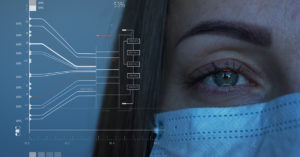By Christine Smith Stetler, RN
Electronic Health Records (EHRs) are purported to do a lot of things to support healthcare providers, and most of their claims are generally accurate. Of course, like anything, there are many areas where EHR vendors could and should make improvements. But, there are also some areas that need specialized focus and attention that shouldn’t be up to your EHR to solve.
“EHRs are reasonably good at the ‘record’ part — keeping track of what happened to the patient…,” according to an article in the Harvard Business Review. The thing EHRs don’t do well is draw usable data from the EHR itself.
Analytics, of course, will help you get to the important information buried in an EHR, but its built-in capabilities won’t cut it. Organizations need to be able to efficiently manage its revenue cycle and make information-driven decisions quickly to improve its overall business.
If this describes your organization, you’re not alone. Many healthcare organizations attempt to use the software as a financial tool as well. The results are often mixed and don’t support financial improvement. As PwC explains, “(P)roviders will need to start viewing their EHR as a strategic asset and look to other technologies to address EHRs’ limitations.”
So, it’s not surprising that one thing I hear consistently from users is how difficult it is to simply procure information and that they struggle to extract real-time insights from their EHR.
You can turn to your IT department to assist in your ‘dig for data.’ However, most hospital leaders aren’t content with this process, and likely neither is IT. Does this sound familiar? You continuously request analyses and data mining from IT, they send the report in a week or two (if you’re lucky), and you find out the data is out of date and largely irrelevant. This can quickly become a ‘wash, rinse, repeat’ process without ever receiving the data in the dynamic fashion that it’s needed.
If your organization is truly focused on increasing revenue and productivity while lowering costs, you need to recognize that forsaking true analytics for vendor consolidation may prove more costly in the long run. Maybe it’s time to let the EHR do what it does best and stop asking it to do more than it can.
“Your EHR system wasn’t built for data analytics. Believe me, I know the counter-intuitive nature of that statement, but it’s true. Your EHR was built as an information repository and a way to electronically store your data,” writes an MGMA consultant.
What exactly is an EHR supposed to do?
The claim is that an EHR can do it all; the truth is, it can’t.
EHRs are mainly designed as a patient information “repository” and workflow tool to improve efficiency. So, it makes some sense they would be lacking in analytics capacity. In addition to workflow, EHRs generally do have basic built-in “data analytics,” which, unfortunately, aren’t designed to offer the information and detail needed to make large-scale business decisions. Of the 99.1% of hospitals using some form of EHR, I’d venture to say all expect, need and want more than a simple data repository. In addition, most hospitals aren’t thrilled by the analytics embedded in their EHRs: 108 hospital leaders gave the internal analytics only 5.5 points out of 10.
Once an EHR is implemented, however, it’s generally there to stay. It’s extremely costly and time-consuming to roll it out in the first place. That means providers must build clumsy workarounds that only delay the inevitable: Working with a partner that can help you draw real conclusions from the information stuck in the EHR.
Nevertheless, every hospital now using an EHR needs real data analytics, not reporting dressed up as data analytics. EHR data often must be matched with data in the organization’s patient accounting software, another strike against using the EHR as a data analytics platform.
A true healthcare data analytics platform can work with an EHR, in concert with additional critical data, to help a healthcare provider realize greater:
- Revenue gains
- Cost savings
- Productivity improvements
“In an era when electronic health records are a source of consternation for many in healthcare, analytics can be a primary tool for enhancing the user experience,” explains HFMA. An area “in which data analytics can have a notable impact (is) electronic health records….”
If it’s not obvious by now, I’ll just say it, EHRs as a standalone analytics tool are keeping your hospital from achieving its business and operational goals. EHRs weren’t built to drive a healthcare provider’s business, but rather be a historical record of it.
Let’s talk results
We know EHRs are here to stay. Don’t get me wrong, that’s a good thing. It’s critical to collect comprehensive patient information to allow healthcare providers to make decisions based on the outputs of that data. We just need to understand its limits as well. As mentioned earlier, if you want to get information straight out of an EHR, without getting the help of a data analytics solution designed to do the heavy lifting, you’ll need a team of data scientists, patience, time and a willingness to ask the same question more than once.
There is a better way. Organizations that specialize in extracting meaningful information from an EHR offer a self-service solution that provides instantaneous, real-time results. With the right partner, you can get claims-level information, trending capabilities, efficient management of large volumes of data, and access to cutting-edge predictive technology – all things that you can’t get with even the most prominent EHRs.
True healthcare analytics that pulls data from an EHR can help:
- Lower denials
- Increase cash collections
- Improve revenue
- Build efficiencies
The savings realized using analytics can easily and quickly offset the cost of an analytics platform, too. “While some healthcare leaders may balk at the cost of investing in an analytics-specific platform – especially after investing millions in an EHR platform – users are reporting it provides them with the highest levels of satisfaction and value,” according to a Definitive Healthcare study.
Mining your EHR data can bring powerful results, specifically when using a tool designed to extract the relevant information to drive clinical, operational and financial results. These are just a handful of results MedeAnalytics clients have realized with its solutions:
- $35 million decrease in accounts receivables in 4 months
- $15 million accounts receivable reduction
- 30% reduction in denials
- $2 million in increased revenue
Moving toward the future
Healthcare providers will be hard-pressed to get these types of results with an EHR alone. EHRs weren’t meant or built for highly advanced data analytics work. We need to stop asking it to be more, like contributing to the revenue cycle through billing and payment tasks. It’s not meant to be used like that, and that’s ok. EHRs remain an extremely important clinical asset, but it shouldn’t be required to do everything.
With the reality that EHRs do some things extremely well and struggle mightily with others, it’s important to look closely at healthcare data analytics organizations that can help healthcare providers extract, understand and act on existing patient data. Healthcare organizations that don’t get help likely will ensure the data remains unavailable for financial and operational decision-making, which hinders the ability of the organization to move forward in the digital age and slows the delivery of care patients expect.
Get our take on industry trends
Why managed Medicaid/Medicare health plans need analytics to improve outcomes
Managed care organizations that provide healthcare services to Medicare/Medicaid members are dedicated to improving the health and wellness of these underserved populations, especially those living in rural areas.
Read on...Using consumer analytics to steer health-related decisions
Companies tap into what people like to eat and drink, how we purchase consumables, where we like to shop, what shows we might like to stream, whether we vote, and so on. If you have ever created a profile on a streaming application (think Netflix or Amazon), you will receive recommended books, movies and other items just as soon as you start surfing.
Read on...Run: Bringing Data Science into your Organization
In this three-part series, we’ve been detailing a tiered approach to introducing and incorporating data science into your organization. In Part One: Crawl and Part Two: Walk, we discussed how to get started from scratch and start building out a dedicated data science program. Today, we’ll dive into the third and final phase to see how to grow quality, centralize governance, incorporate user feedback, and more.
Read on...Walk: Bringing Data Science into your Organization
In this three-part series, we’re exploring a tiered approach to introducing and incorporating data science into your organization. In Part One: Crawl, we discussed how to get started from scratch. Today in Part Two: Walk, we’ll address issues that may emerge and how to overcome them, how to build out a dedicated data science team, and more.
Read on...


